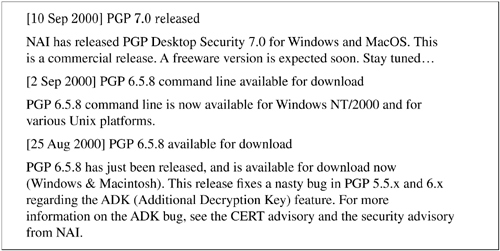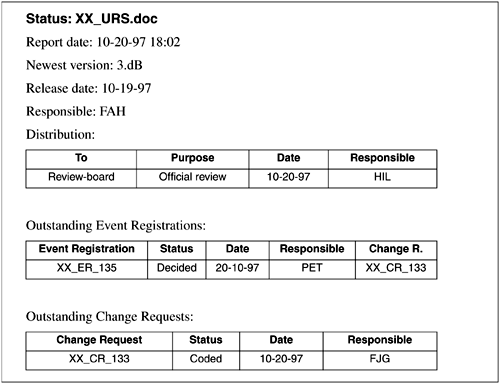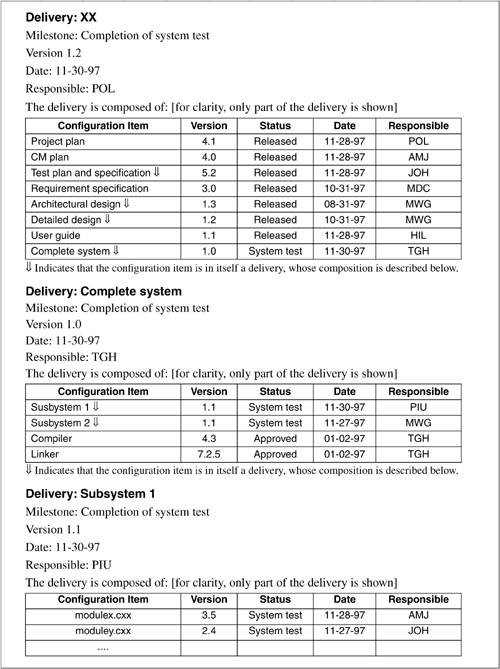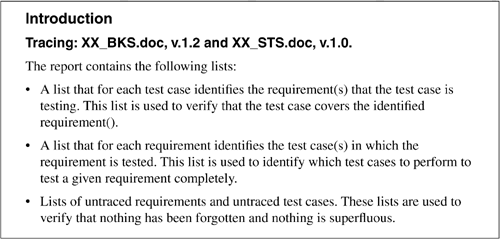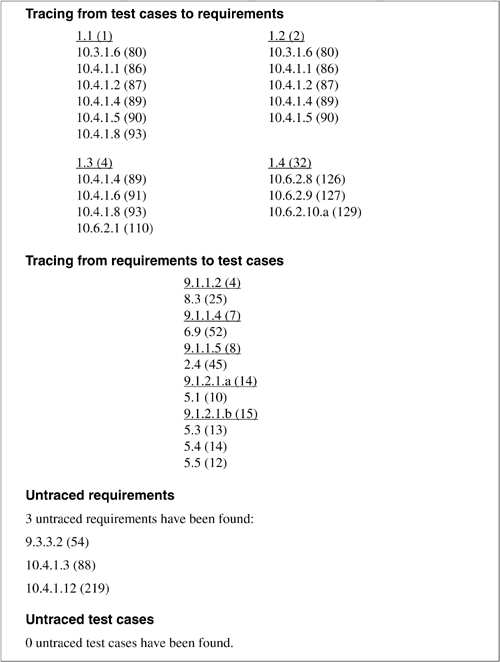9.1 Examples
| Examples of report types are given below, but many other types could be produced. In these examples, the format has been changed to fit the format of this book. XX is the acronym for the product. Where applicable , the user requirement document is XX_URS.doc, _URS is the type acronym for a user requirement specification, and .doc is the file type. Release NoteFigure 9-1 shows a release note for a delivery configuration item. The example in Figure 9-2 is downloaded from the Internet and shows an ongoing release note for a product. Figure 9-1. Release Note Example 1 Figure 9-2. Release Note Example 2 Item Status ListFigure 9-3 shows a status report for a configuration item. Figure 9-3. Item Status List Item History ListFigure 9-4 shows a history report for a configuration item. The table in the figure shows the history for a user requirement specification for a given product. Figure 9-4. Item History List Item Composition ListFigure 9-5 shows a composition report for a configuration item. The item is a delivery, itself composed of several subdeliveries. The report breaks each subdelivery down into individual configuration items. Only an extract is shown. Figure 9-5. Item Composition List Trace ReportFigures 9-6 and 9-7 show an extract of a trace report between a user requirement specification and the corresponding system test specification. The report was originally produced in Access. Similar reports may be produced for all pairs of configuration items that are traced to each other. Figure 9-6. Trace Report, Part a Figure 9-7. Trace Report, Part b In Figure 9-7, a section number and running number identify the requirement and test cases. These reports may seem "bare" but are quite useful. Where work is done on a test case, for example, the unique identification of the test case will be known, and the identification of the requirements traced to it can easily be found in the list. The unique identification of the requirements serves as a key to the entire requirement. It may be expedient to provide a title or more information for each requirement and test case, in addition to the unique identification numbers , but this takes up more space and makes the lists less handy. |
EAN: 2147483647
Pages: 181

